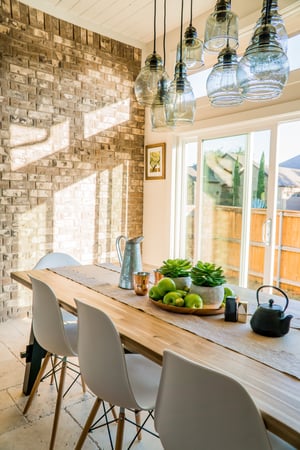 LEED buildings are becoming the gold standard for building design; if you’re not following their innovative design rubric for your buildings, you’ll soon become stale and outdated.
LEED buildings are becoming the gold standard for building design; if you’re not following their innovative design rubric for your buildings, you’ll soon become stale and outdated.
So, what is LEED and what does it stand for?
LEED is is a certification program focused primarily on new, commercial-building projects and based upon a points system.
The more points you earn, the higher your rating.
Leadership in
Energy and
Environmental
Design
Buildings impact people and the planet’s wellbeing.
After countless case studies and research, LEED has developed several resources for builders and homeowners to foster green structures, reducing the negative environmental and health impacts while increasing financial savings and comfort.
“Green building is the practice of designing, constructing and operating buildings to maximize occupant health and productivity, use fewer resources, reduce waste and negative environmental impacts, and decrease life cycle costs.
LEED provides a framework to create healthy, highly efficient and cost-saving green buildings. LEED certification is a globally recognized symbol of sustainability achievement.” - U.S. Green Building Council
The Basics of the LEED Homes Rating System
When most people think of green or LEED homes, they more often than not assume that they are unaffordable; however, that simply isn’t the case as 50% of LEED homes are affordable homes, according to U.S. Green Building Council as of February 2012.
LEED provides design and verification support for builders through green consultants, home designers, providers and green raters to help you build a qualified LEED home.
Listed below are the five major components of an innovatively designed LEED home to improve the health, comfort, durability, energy efficiency and environmental responsibility of the home and those who dwell inside it.
Why LEED Homes Matter
LEED homes are increasing in popularity as culture is shifting its focus on green building to protect their children’s future, reduce the cost of rising energy prices and reliance on foreign oil, and minimize the impact of global warming.
According to the U.S. Green Building Council, the following are just a few reasons why LEED homes are benefiting homeowners and builders:
Homeowner Benefits
- Higher resale value
- Healthier indoor space
- Lower use of energy, water and other resources
- Better for building occupants, the community and the environment well being
Builder Benefits
- Instant recognition for your building
- Enhances your brand and establishes you as a leader in green building
- Increased customer satisfaction
- Increased referral rate
- Increased revenue
- Higher close rate
- More sales
- Higher profits
“U.S. construction should see an increase in the share of green work in the next few years, largely as a result of companies intensifying their involvement in the green building industry.
An increasing percentage of respondents projected that more than 60 percent of their projects would be green projects - from 24 percent of respondents in 2015 to 39 percent in 2018.
Respondents projecting that fewer than 15 percent of their projects would be certified green plummeted from 41 percent in 2015 to 27 percent by 2018.” - World Green Building Trends Study from Dodge Data & Analytics
Use these LEED Project Tools to get started on your next build. Go a step further and click the button below to learn about aluminum and vinyl window performance and the EPA.


